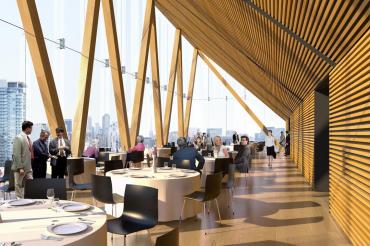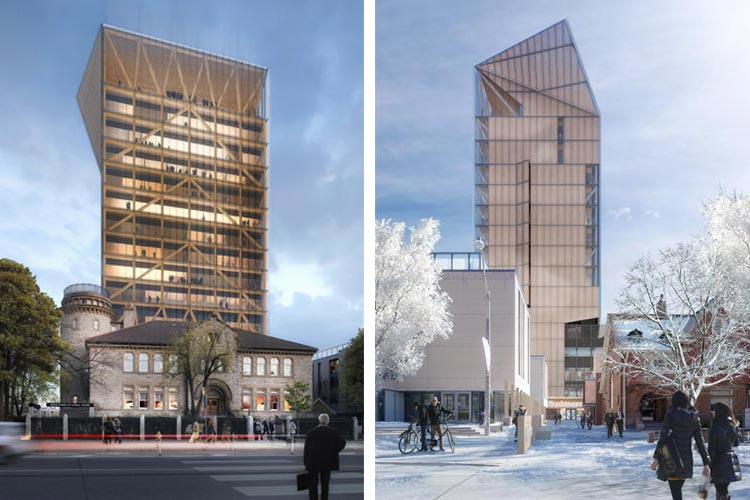Excitement grows for U of T’s plans to build wood tower

Published: May 9, 2018
It’s rare for an announcement about the construction of a new academic building to elicit tweets about being “giddy with excitement,” but that’s exactly what happened when the University of Toronto revealed its plans to build a 14-storey academic tower made of timber.
People around the world took to Twitter to share their enthusiasm for the timber building – many calling the project “exciting” and some praising the design for being “bold” and “gorgeous”.
Read about U of T's academic wood tower
So what’s getting people so excited? U of T News asked Robert Wright, dean of the Faculty of Forestry and an associate professor in the John H. Daniels Faculty of Architecture, Landscape, and Design.
“As a building scientist friend once said, you can't think of a more sustainable building material that you can guarantee a supply well into the future if you manage the resource well,” Wright said about timber.
Now this is quite nice. University of Toronto jumps on the tall timber bandwagon with a lovely looking timber CLT tower, 14 storeys tall https://t.co/S7t1GuSXEL pic.twitter.com/VIWYEeZnf1
— Philip Oldfield (@SustainableTall) May 9, 2018
He suspects the positive reception to the building is due in part to a growing interest in sustainability and green technology.
“In every field – architecture, design, engineering – there are challenges and one of the challenges is to be able to use biologically sustainable material in more of a structural sense – and to build at taller and taller heights,” Wright says.
Wood, he says, is the perfect candidate.
“It's just amazing because wood can shelter us, feed us, shade us, do so many things and it can also be used for building material. And it's sustainable.”

Among its sustainable qualities: Timber requires little production, is lightweight and it absorbs carbon. It’s also recyclable, says Wright.
“When we tear down buildings and build new buildings in their place, there's a huge amount of materials that come out of it that are often not recyclable – but wood is actually recyclable,” he says. “It's a very efficient material – it can be repurposed, it can be burnt for energy.”
Beyond its low-carbon qualities, wood has widespread appeal because “it's actually beautiful,” says Wright.
“It's hard to get excited about something like concrete or steel,” he says. “People really relate to the richness and quality of wood. There's something very human about that in terms of material.”
Read about the wood tower in the Toronto Star
Read about the tower in Canadian Architect
The tower will also provide opportunities for researchers at U of T to study a tall, wood building in real time.
“It's a wonderful thing to see a university that can translate what we do here into the physical world,” says Wright. “We're raising the bar.”
The project will promote collaboration between urban-focused academics across the university and beyond through the provincial government's newly created Mass Timber Institute and U of T's School of Cities.
“The issues we're facing – for example, climate change or environmental pollution – are going to require all of our collective intelligence across all the disciplines to be able to deal with these problems in an effective way from the sociology to the economics and architecture of these spaces in our cities,” says Wright. “It’s all integrated and we need all our expertise to do that.”
Read about how scholars are using the School of Cities to add new dimensions to their research



